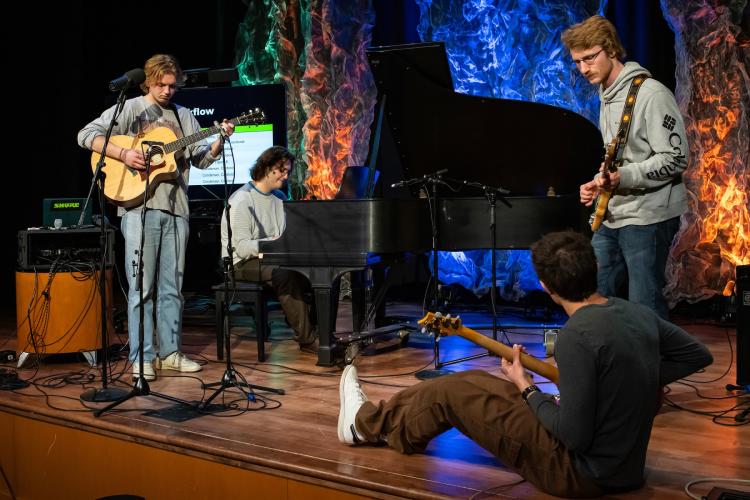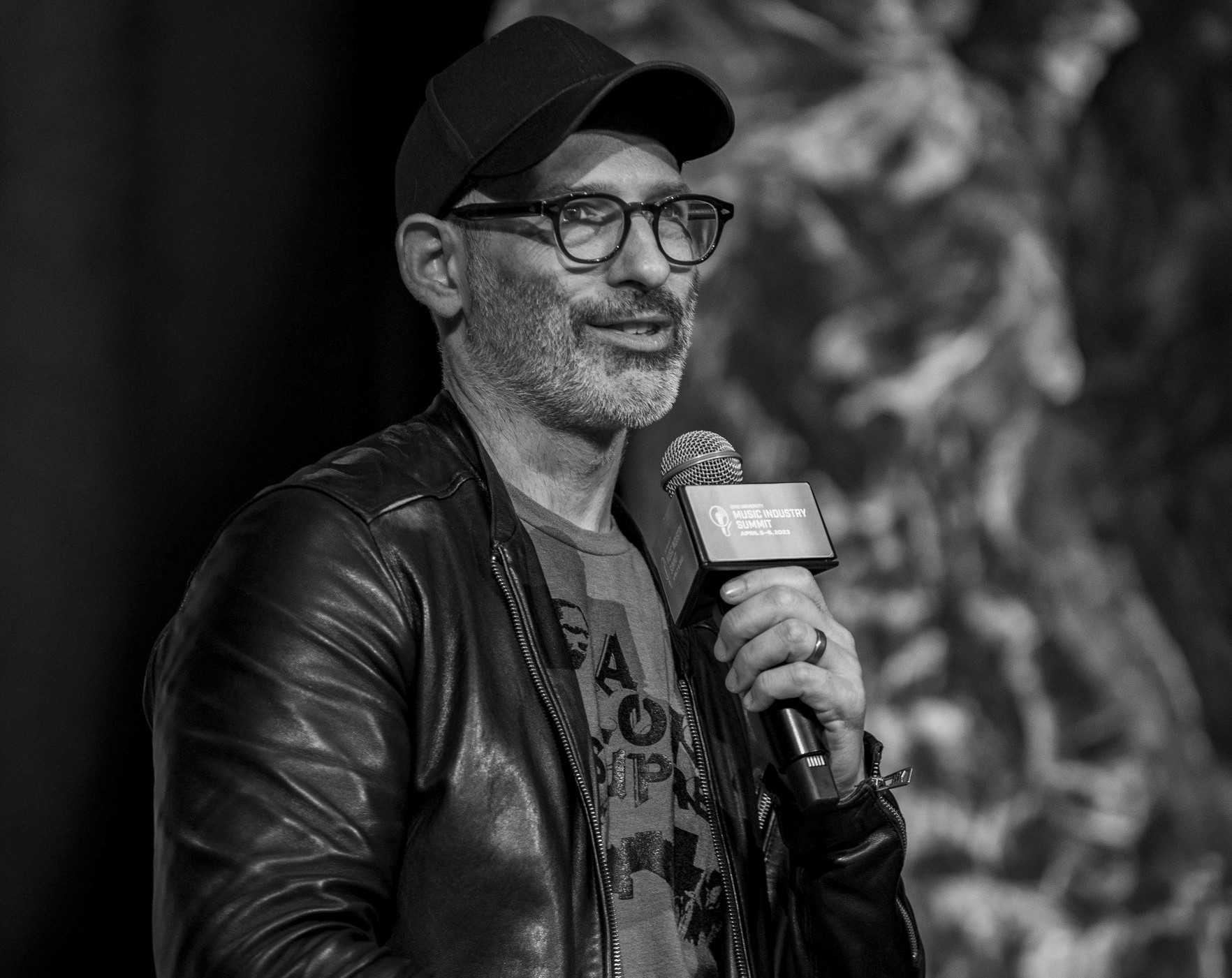
How AI is transforming the creative economy and music industry

Artificial intelligence is more than just a hot topic, or data-driven tool—it’s changing the world in unexpected ways. In simplest terms, artificial intelligence (AI) combines computer science and robust datasets to enable problem-solving. The use of AI has exploded in the past year, even in creative industries like music.
Artists as big as The Beatles have already experimented with artificial intelligence. The band’s last “new” song “Now And Then” was created using AI to bring an unreleased demo recording by the late John Lennon to life. The remaining two band members, Paul McCartney and Ringo Starr, released the single in November 2023. “Now And Then” will be the last song to feature all four Beatles and their first and only song released in the 21st century.
Ohio University School of Media Arts and Studies Director and music industry Associate Professor Josh Antonuccio believes this is only the beginning of AI’s influence on music.
“It is a tool set that is far beyond the scope of anything we have seen in human innovation to this point,” Antonuccio said. “The Beatles story is indicative of change for a lot of things in music, and that change will be across the board in creative industries."
Ohio University is preparing students to thrive in the new reality of artificial intelligence. Antonuccio oversees the primary music industry core classes in OHIO’s recording industry curriculum and believes artificial intelligence needs to be a part of the conversation. Additionally, he created an AI in media production and storytelling course at the beginning of the fall 2023 semester. Antonuccio’s goal was to provide a class that allows for hands-on use of cutting-edge AI tools so students can experiment in different areas like music production, video editing, transcription and generative art platforms, to name a few.
“I talk about AI in all of my classes, but specifically the industry ones because of how quickly it is starting to reshape the face of the creative economy,” said Antonuccio.
Using AI, musicians and songwriters have the power to generate content in seconds, synthesize sound-alike vocals, separate elements on the same track and much more. In the case of The Beatles’ “Now And Then,” AI was primarily restorative, not generative. Software created by Peter Jackson’s team during the making of “The Beatles: Get Back” documentary, used AI to isolate John Lennon’s voice on a recording so intertwined with noise and piano it was previously unusable.
“When they tried to do ‘Now And Then’ as a part of the anthology series in the 90s, George Harrison played on it, but they couldn’t go anywhere with the condition of Lennon’s demo,” Antonuccio explained. “[Now] they were able to apply ‘demixing’ technology to isolate the vocal, and since Harrison had played on the track, it was technically the last song they all played on together.”
With “Now And Then,” the Beatles proved artificial intelligence can provide artists with a cutting-edge tool set that defies mortality, but other applications of AI have presented a slew of concerns. Earlier this year, Ghostwriter used AI voice filters to imitate Drake and The Weeknd’s voices without their consent in the song “Heart on My Sleeve.” The resemblance to the two industry giants was uncanny, and Ghostwriter’s song was one of the biggest and most controversial music stories of the year. As concerning as the AI copies were for some, the song started conversations of what role artificial intelligence can and should play in music and other creative industries.
“There's a huge consideration there, not having access to your own voice, your own likeness, not being able to control how people use your digital image,” said Antonuccio. “It has ethical considerations and vast implications for not just the music industry, but for everybody.”
Antonuccio believes there’s another issue that many in the industry are already contending with—the unprecedented amount of human-generated content being released into the mainstream. Somewhere between 100,000 to 150,000 songs are being released every day on major streaming platforms like Spotify and Apple Music. Antonuccio notes that AI will only accelerate the volume of songs entering the marketplace. “We are facing a tsunami of AI-generated songs from amateur musicians to major artists in the years to come,” he said. “YouTube Music’s recent announcements with Dream Track for Shorts and Music AI tools is just the beginning of this next phase of the music industry. All three of the major labels have now launched AI-based initiatives in 2023 that are a harbinger of things to come.”
Many of these streaming platforms utilize AI-based algorithms to deliver music to users. For listeners, this makes discovering new content overwhelming, and for new artists, this makes standing out from the crowd nearly impossible.
Songs churned out using AI would only add to the noise. In 2016, AI created “Daddy’s Car,” a song generated in the style of The Beatles with human-written lyrics. AI analyzed a database of Beatles songs to create a similar composition. The song isn’t exactly up to The Beatles' snuff, but artificial intelligence creating songs based on legacy artists may become more commonplace. Antonuccio thinks what’s more interesting is what happens as AI technology enables the creation of songs that genuinely move people, or when AI is eventually used to write songs that are on par with some of the best tracks ever written.
“I think you have arguments about how much humanity matters and what that means about the role of songwriters and creativity moving forward,” said Antonuccio. “But art is art, and the technology of the last 100 years in particular has enabled artists to achieve extraordinary creative feats. AI is now a part of that continuum, albeit with a much more powerful toolset.”
This article was originally published on Jan. 2, 2024. Last updated on April 3, 2024.

